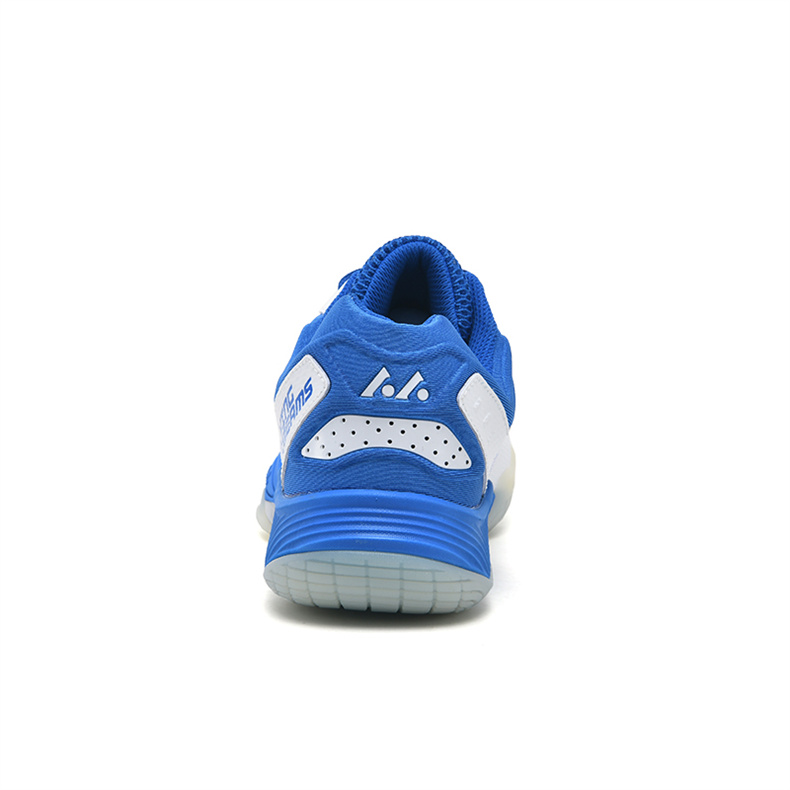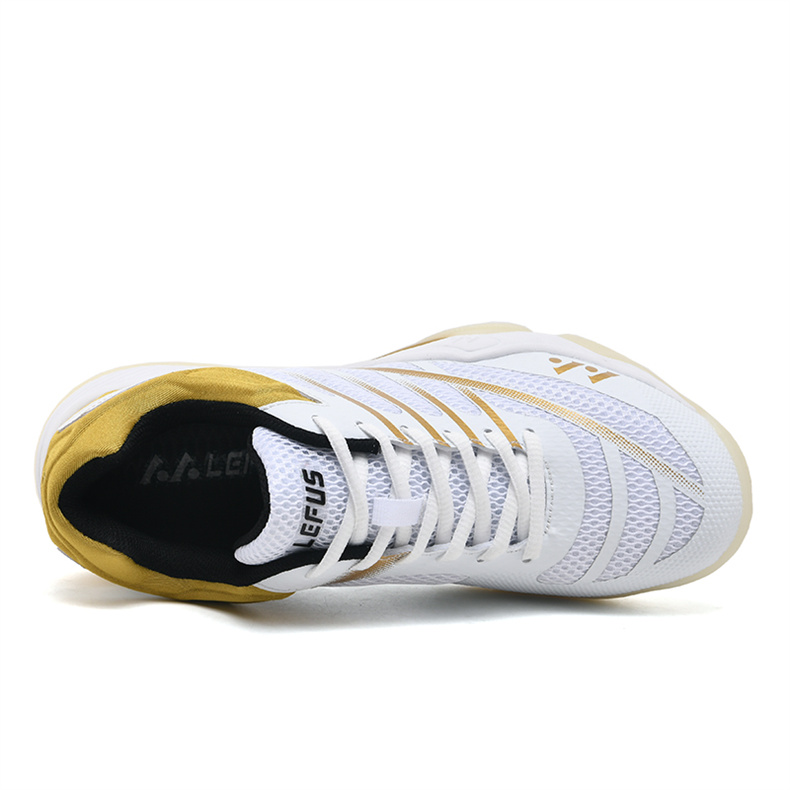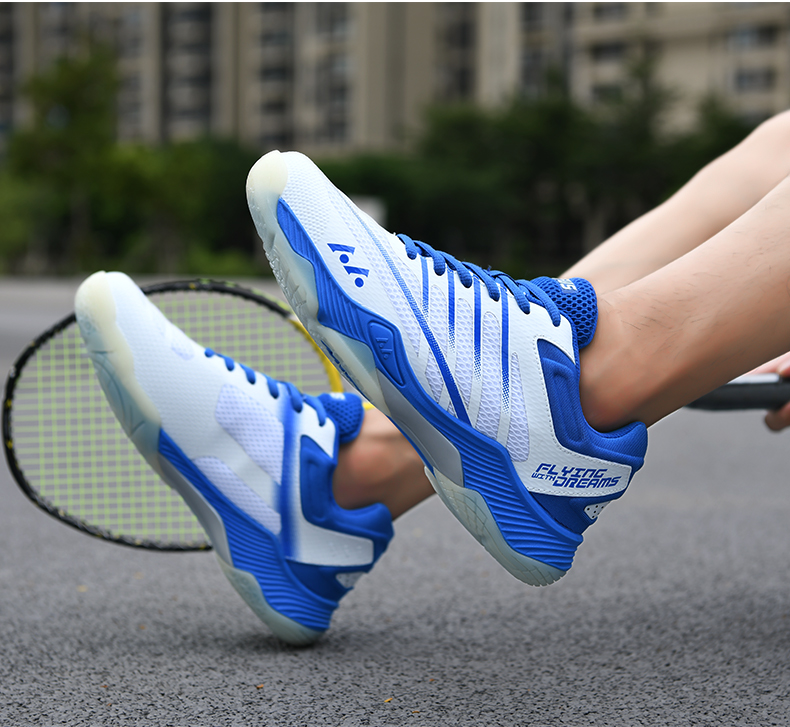
Pickleball is a game that can be played both indoors and outdoors, and each setting presents unique challenges and requirements for players. One crucial aspect to consider when playing pickleball is the type of shoes you wear. Indoor and outdoor pickleball shoes have distinct characteristics that cater to the specific needs of each environment. In this article, we will explore the differences between indoor and outdoor pickleball shoes to help you make an informed decision when choosing the right footwear for your game.
Traction and Sole Design
One of the main differences between indoor and outdoor pickleball shoes is the traction and sole design. Let’s examine each type:
Indoor Pickleball Shoes: Indoor pickleball shoes are designed to provide excellent traction on smooth, indoor court surfaces such as wood, laminate, or tile. The following factors contribute to their performance:
- Gum Rubber Sole: Indoor pickleball shoes typically feature a gum rubber sole. Gum rubber is a soft and sticky material that offers outstanding grip and traction on indoor courts. This type of sole allows players to make quick lateral movements without slipping.
- Herringbone Tread Pattern: Many indoor pickleball shoes have a herringbone tread pattern. This pattern consists of zigzag lines that resemble the bones of a herring fish. The herringbone pattern provides optimal grip and stability, allowing players to change direction swiftly and make sharp turns without losing control.
Outdoor Pickleball Shoes: Outdoor pickleball shoes are designed to withstand the challenges of playing on various outdoor surfaces, such as concrete, asphalt, or textured courts. Here are some features that differentiate outdoor pickleball shoes:
- Durable Rubber Sole: Outdoor pickleball shoes often have a durable rubber sole that can withstand the abrasive nature of outdoor surfaces. This type of sole offers durability, longevity, and resistance to wear and tear.
- Aggressive Tread Pattern: The tread pattern on outdoor pickleball shoes tends to be more aggressive compared to indoor shoes. The deeper grooves and larger lugs are designed to provide enhanced traction on outdoor surfaces, ensuring stability and preventing slipping.
Water Resistance and Breathability
Another important consideration when choosing pickleball shoes is their water resistance and breathability, as indoor and outdoor environments differ in terms of moisture and temperature. Let’s explore each type:
Indoor Pickleball Shoes: Indoor pickleball shoes do not necessarily require water resistance, as indoor courts are typically dry and controlled environments. However, breathability is crucial for comfort during long periods of play. Look for shoes with breathable materials and ventilation features to keep your feet cool and dry.
Outdoor Pickleball Shoes: Outdoor pickleball shoes often have water-resistant properties to protect your feet from moisture, such as dew or light rain. They may feature water-repellent upper materials or additional treatments to keep your feet dry in wet conditions. However, breathability remains essential to prevent sweat buildup and maintain comfort.
Durability and Construction
Durability and construction play a vital role in pickleball shoes, as the demands of indoor and outdoor play can differ significantly. Here’s what to consider for each type:
Indoor Pickleball Shoes: Indoor pickleball shoes primarily focus on providing maximum traction and grip on indoor courts. They may have softer materials to enhance grip, but these materials may not be as durable as those used in outdoor shoes. Indoor shoes are typically lighter in weight and offer more flexibility for quick movements.
Outdoor Pickleball Shoes: Outdoor pickleball shoes prioritize durability and sturdiness to withstand the challenges of outdoor play. They often feature reinforced materials, additional overlays, and protective toe caps to enhance durability and prevent damage from rough surfaces. Outdoor shoes tend to be slightly heavier and offer more stability for uneven terrains.
Price and Personal Preference
Price and personal preference are subjective factors that can influence your choice between indoor and outdoor pickleball shoes. Consider the following:
Price: In general, outdoor pickleball shoes tend to be more expensive than indoor shoes due to their emphasis on durability and rugged construction. However, prices can vary greatly depending on the brand, materials used, and additional features. Set a budget and consider the quality, performance, and longevity of the shoes when making your decision.
Personal Preference: Ultimately, personal preference plays a significant role in choosing between indoor and outdoor pickleball shoes. Some players may prefer the lightweight and flexible feel of indoor shoes, while others prioritize the sturdiness and durability of outdoor shoes. Consider your playing style, the court surfaces you frequent the most, and your comfort preferences when making a decision.
Maintenance and Care
Proper maintenance and care are crucial to prolonging the lifespan of your pickleball shoes, regardless of whether they are for indoor or outdoor use. Here are some general tips to keep them in good condition:
- Clean Regularly: Wipe off any dirt or debris from your shoes after each use. If they become excessively dirty, use a mild soap and water solution to clean them gently. Avoid using harsh chemicals or machine washing, as they can damage the materials.








